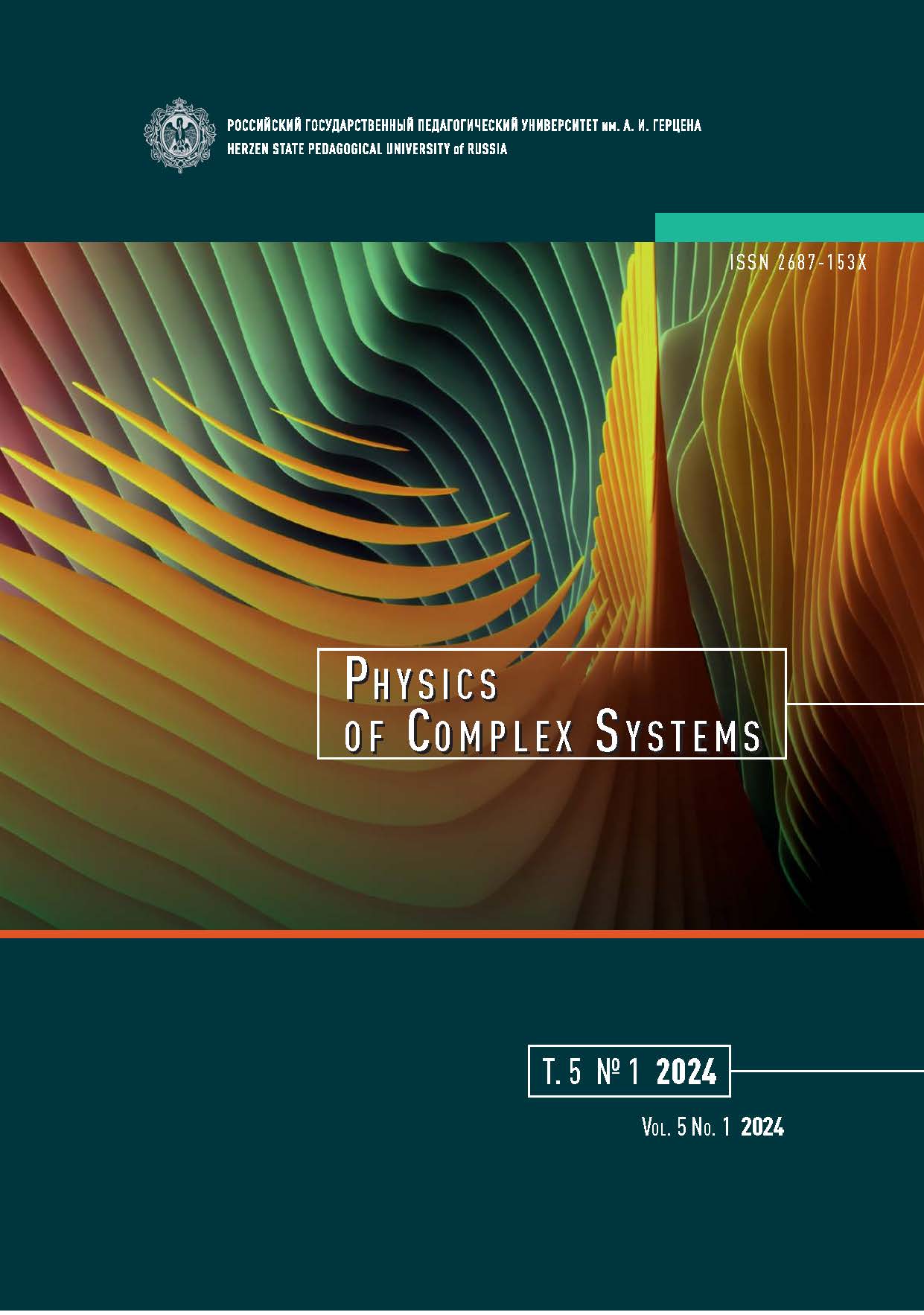Dielectric properties of photoanodes for dye-sensitized solar cells
DOI:
https://doi.org/10.33910/2687-153X-2024-5-1-10-17Keywords:
dielectric properties, mesoporous layer, titanium dioxide, dye-sensitized solar cells, composite materials, organic dyesAbstract
Solar energy (SE) research is relevant today, especially as far as dye-sensitized solar cells (DSSC) are concerned, which are third-generation devices. The prospect of their future development lies in the creation of architectural and interior-integrated panels, flexible and portable devices for SE conversion. Examining the properties of their components and their mutual impact is crucial for improving the efficiency of DSSC and moving away from the standard cell design.
In this work, we investigated dielectric properties of photoanodes (PhA) for DSSC. The influence of a dye on dielectric properties of PhA is shown. By measuring dielectric properties in the samples, we obtained dielectric permittivity and dielectric loss tangent that ranged from –50 to 150 °C and from 10-1 to 106 Hz.
Our results make a significant contribution towards a better understanding of the influence that the dye has on dielectric properties of PhA and can serve to develop new efficient composite materials for new-generation photoelectronic devices.
References
Berni, A., Mennig, M., Schmidt, H. (2004) Doctor Blade. In: M. A. Aegerter, M. Mennig (eds.). Sol-Gel technologies for glass producers and users. Boston: Springer Publ., pp. 89–92. https://doi.org/10.1007/978-0-387-88953-5_10 (In English)
Bonkerud, J., Zimmermann, C., Weiser, P. M. et al. (2021) On the permittivity of titanium dioxide. Scientific Reports, 11 (1), article 12443. https://doi.org/10.1038/s41598-021-92021-5 (In English)
Huang, J., Lim, P. C., Shen, L. et al. (2005) Cubic silsesquioxane-polyimide nanocomposites with improved thermomechanical and dielectric properties. Acta Materialia, 53 (8), 2395–2404. https://doi.org/10.1016/j.actamat.2005.02.001 (In English)
Kim, J.-H., Han, S.-H. (2020) Energy generation performance of window-type dye-sensitized solar cells by color and transmittance. Sustainability, 12 (21), article 8961. https://doi.org/10.3390/su12218961 (In English)
Mohamed, J. J., Hutagalung, S. D., Ain, M. F., Ahmad, Z. A. (2011) Effect of excess TiO2 in CaCu3Ti4O12 on the microstructure and dielectric properties. Journal of Ceramic Processing Research, 12 (5), 496–499, http://dx.doi.org/10.36410/jcpr.2011.12.5.496 (In English)
O’Regan, B., Gratzel, M. (1991) A low-cost, high-efficiency solar cell based on dye-sensitized colloidal TiO2 films. Nature, 353, 737–740. https://doi.org/10.1038/353737a0 (In English)
Ramesan, M. T. (2015) Processing characteristics and mechanical and electrical properties of chlorinated styrenebutadiene rubber/fly ash composites. Journal of Thermoplastic Composite Materials, 28 (9), 1286–1300. https://doi.org/10.1177/0892705713505611 (In English)
Romeu, M. C., Oliveira, R. G. M., Sales, A. J. M. (2013) Impedance spectroscopy study of TiO2 addition on the ceramic matrix Na2Nb4O11. Journal of Materials Science: Materials in Electronics, 24 (12), 4993–4999. https://doi.org/10.1007/s10854-013-1514-6 (In English)
Steparuk, A. S., Irgashev, R. A., Zhilina, E. F. et al. (2022) Performance evaluation of dye-sensitized solar cells (DSSCs) based on metal-free thieno[3,2-b]indole dyes. Journal of Materials Science: Materials in Electronics, 33 (9), 6307–6317. https://doi.org/10.1007/s10854-022-07805-w (In English)
Szindler, M., Szindler, M., Drygała, A. et al. (2021) Dye-sensitized solar cell for building-integrated photovoltaic (BIPV) applications. Materials, 14 (3), article 3743. http://dx.doi.org/10.3390/ma14133743 (In English)
Wang, D. H., Goh, W. C., Ning, M., Ong, C. K. (2006) Effect of Ba doping on magnetic, ferroelectric, and magnetoelectric properties in mutiferroic BiFeO3 at room temperature. Applied Physics Letters, 88 (21), article 212907. http://dx.doi.org/10.1063/1.2208266 (In English)
Wypych, A., Bobowska, I., Tracz, M. et al. (2014) Dielectric properties and characterisation of titanium dioxide obtained by different chemistry methods. Journal of Nanomaterials, 2014, article 124814. https://doi.org/10.1155/2014/124814 (In English)
Downloads
Published
Issue
Section
License
Copyright (c) 2024 Ekaterina V. Tekshina, Petr I. Lazarenko, Alexander S. Steparuk, Darya A. Krupanova, Sergey A. Kozyukhin

This work is licensed under a Creative Commons Attribution-NonCommercial 4.0 International License.
The work is provided under the terms of the Public Offer and of Creative Commons public license Creative Commons Attribution 4.0 International (CC BY 4.0).
This license permits an unlimited number of users to copy and redistribute the material in any medium or format, and to remix, transform, and build upon the material for any purpose, including commercial use.
This license retains copyright for the authors but allows others to freely distribute, use, and adapt the work, on the mandatory condition that appropriate credit is given. Users must provide a correct link to the original publication in our journal, cite the authors' names, and indicate if any changes were made.
Copyright remains with the authors. The CC BY 4.0 license does not transfer rights to third parties but rather grants users prior permission for use, provided the attribution condition is met. Any use of the work will be governed by the terms of this license.







